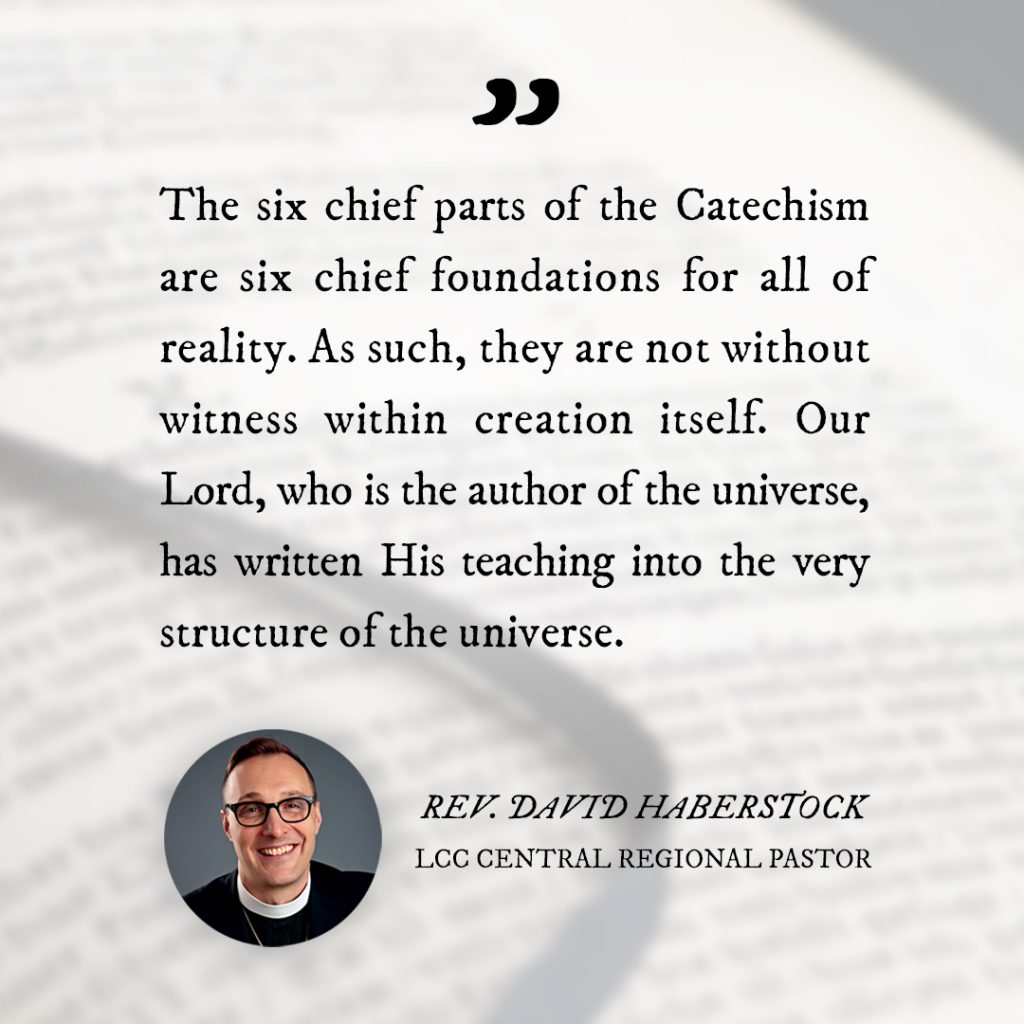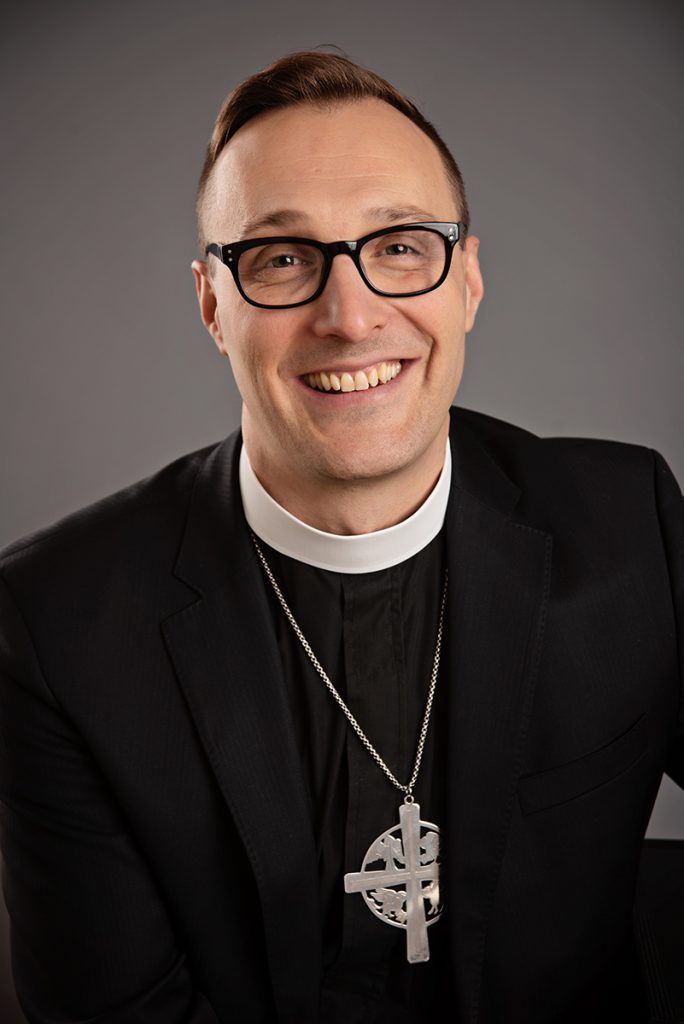Catechism as pattern of the universe
 by David Haberstock
by David Haberstock
God our Father created the universe by speaking it into existence, and by doing so He established meaning and order in all things.
We live in the aftermath of the modern era, in which society’s understanding of the world is rooted in the scientific process. As a result, our culture’s worldview has been conditioned and built on a scientific frame. Science focuses on the physical world, physical realities, what can be determined by the five senses. Thus, we now think in terms of physical realities (physics), and our primary questions about the world around us are: what is this made of and what does it do?
Nowadays we view the universe as a great big mechanism and human beings as mechanisms—robots made of flesh that can be fixed like a machine. We think physically, or mechanistically, about most things.
However, these are not the questions of those who lived before the modern era. The writers of Scripture lived in a world where the fundamental questions were not physical ones, but spiritual ones, asking: what does this mean?
Notice the Lutheran connection here: Was ist das? The primary philosophical questions of the authors whom the Holy Spirit used to write Scripture were not questions of physics but of meaning. When we come to Scripture asking modern questions, which were not part of the worldview in which Scripture was written, we miss much of what is in Scripture and even at times make wrong assumptions and conclusions.
The writers of Scripture lived in a world where the fundamental questions were not physical ones, but spiritual ones, asking: what does this mean?
Older Lutheran writers took Scripture seriously, as an actual historical document detailing actual historical events. They asked not how the world could have been physically or scientifically made, but rather what it means that it was designed and made by its Creator? Thus, older authors view the Scriptures not only as events but asked the question: what do these historical events mean? Therefore, the Catechism, which is a handbook of the most important teachings of Scripture, is a handbook for the meaning and patterns that are embedded into the universe.
The six chief parts of the Catechism are key patterns of meaning found in the Bible. For instance, the Bible itself tells us in 1 Corinthians 10 and 1 Peter 3 that the flood and the crossing of the Red Sea are symbols, patterns, prefigurements, or types of Holy Baptism.
God does not change. From the foundation of the world, He intended to send His Son to save the world. From the foundation of the world, He intended to work through physical means to distribute that salvation to individuals. Thus, as He has intended this from the foundation of the world, He has in many and various ways worked these patterns into the world both in the past and in the present.
The six chief parts of the Catechism are key patterns of meaning found in the Bible. For instance, the Bible itself tells us in 1 Corinthians 10 and 1 Peter 3 that the flood and the crossing of the Red Sea are symbols, patterns, prefigurements, or types of Holy Baptism.
The ancient church certainly thought this and saw patterns even in the literature of the pagan world. For instance, Odysseus lashing himself to the mast of a ship to survive the seduction of the sirens is seen as an image of the Christian clinging to the cross of Christ in the midst of temptation. In modern literature such as Tolkien’s Lord of the Rings it is easy to see the cleansing of Isengard as an image of what Baptism accomplishes by killing and cleansing the evil that had taken over that beautiful place.
The truth is our Lord has not left Himself without witness. Creation itself gives voice to Him. We call this “natural knowledge” of God. Part of natural knowledge is natural law, and this meaning the Lord imbues in every day life is a form of natural law.
In our modern day, we have become alienated from this source of knowledge and meaning. We miss the meaning embedded in everyday life because our culture does not think that life has meaning. Just because people have become alienated from this meaning doesn’t mean they don’t still crave it. The success of the Purpose Driven books in decades past shows the hunger for purpose and meaning now more than ever.

The six chief parts of the Catechism are six chief foundations for all of reality. As such, they are not without witness within creation itself. Our Lord, who is the author of the universe, has written His teaching into the very structure of the universe. There is a reason why literary studies always talk about Christ figures and patterns, for once the Word made flesh reveals His teaching to you through His apostolic and prophetic Word you begin to see these patterns in everyday life. They reinforce themselves again and again, pointing you back to Jesus and His life-giving self-sacrifice for you.
———————
Rev. David Haberstock is Lutheran Church–Canada (LCC)’s Central Regional Pastor.





